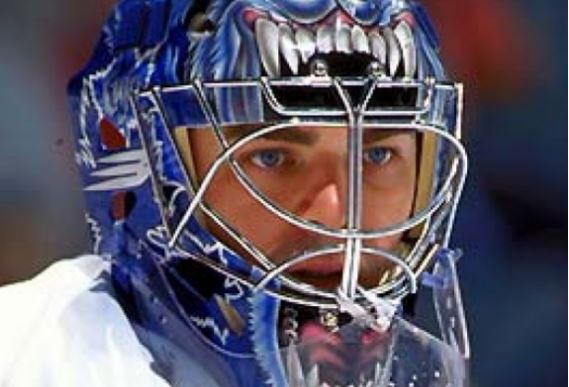On Thursday (Jan. 27) the Edmonton Oilers signed Evander Kane to a one-year contract that reportedly comes with a $750,000 salary and $625,000 in bonuses.

Kane had recently become a free agent after the veteran forward’s former team, the San Jose Sharks, terminated the remainder of his $49 million, seven-year contract for breach of his NHL standard player contract and for violation of American Hockey League COVID protocols.
The 30-year-old Kane is an immensely talented player who has scored at a rate better than one goal every three games over his 12 seasons in the NHL, and last season led the Sharks in points. He also comes with a checkered past, having a reputation as a teammate who is not good in the dressing room while also dealing with several unsavoury allegations off the ice.
For Edmonton general manager Ken Holland, this was a bold and controversial move that carried at least a hint of desperation; after recently going 2-11-2 over a 15-game stretch, the Oilers needed a jolt before their once-promising season slipped away.
It was also a rare opportunity. The free-agent pool is virtually empty in January, and players of Kane’s calibre usually aren’t available via trade at a point in the season when most teams are still a way off from knowing whether they are buyers or sellers.
In Oilers history, there are just a few instances of making a major addition at or around the mid-point of the schedule, coming under a variety of circumstances. Here’s a look at five unique moves that proved most successful.
Bernie Nicholls
Bernie Nicholls was acquired by the Oilers on Oct. 4, 1991, along with Louie DeBrusk and Steve Rice in exchange for Mark Messier, but it would be more than two months before the All-Star centre would even show up in Edmonton, let alone play his first game in blue and orange.
Nicholls was not happy being traded to the Oilers and especially unhappy with having to leave New York, where his wife Heather was several months pregnant with twins and had been ordered 23 hours of bedrest daily. It was until after she had given birth that Nicholls reported to the Oilers on Dec. 6, 1991. (from ‘Nicholls joins Oilers, hopes for trade’, The Edmonton Journal, 12/7/91).
While he desired a trade out of Edmonton, Nicholls never let that impact his on-ice performance. His Oilers debut came on Dec. 10, 1991, and he would play 49 games with the Oilers in 1991-92, notching 20 goals and 29 assists in 49 games to help Edmonton move up the standings to finish third in the Smythe Division.
Nicholls was instrumental in Edmonton’s surprise run to the Campbell Conference Final in the 1992 playoffs. He notched eight goals and 11 assists to rank second on the Oilers with 19 points that postseason.
His wish for a trade was eventually granted by Edmonton general manager Glen Sather in January 1993, when Nicholls was shipped to the New Jersey Devils after appearing in just 95 regular-season games with the Oilers.
Curtis Joseph
In August 1995, Sather made a blockbuster trade with the St. Louis Blues to acquire Curtis Joseph, a 28-year-old goaltender who was both an All-Star and Vezina Trophy finalist.

The deal raised eyebrows, given the Oilers already had a bonafide starter in Bill Ranford, also a 28-year-old former All-Star who received the Conn Smythe Trophy in 1990 after backstopping Edmonton to the Stanley Cup.
The crease wasn’t big enough for both, prompting speculation that there was another trade coming, but the Oilers and Joseph couldn’t agree on a contract, so the season began with Ranford still the starter in Edmonton and Joseph being sent to the Las Vegas Thunder of the International Hockey League where he could stay sharp.
While Joseph went 12-2-1 during his Vegas stint, the Oilers slumped to the bottom of the NHL standings. With Edmonton well on its way to missing the playoffs for a fourth straight year, Sather finally made his move on Jan. 11, 1996, sending Ranford to the Boston Bruins and signing Joseph to a three-year contract.
Joseph won his Oilers debut on Jan. 13, 1996, beginning a 32-game stretch where he played all but once and went on to post a 15-16-2 record with Edmonton in 1995-96. An improving Oilers team bettered its win percentage following the trade and went on a late-season run of 8-2-1 that set the stage for 1996-97, when Joseph’s brilliant play keyed Edmonton to its first playoff appearance since 1992 and a memorable first-round upset of the Dallas Stars.
Bill Guerin & Roman Hamrlik
Arriving in Edmonton just five days apart, Bill Guerin and Roman Hamrlik helped spark arguably the biggest midseason turnaround in Oilers history.

On Dec. 30, 1997, the Oilers traded for top-pairing defenseman Hamrlik, a former No. 1 overall pick, from the Tampa Bay Lightning. Then, on Jan. 4, 1998, Guerin was acquired by Edmonton in a deal that included all-star centre Jason Arnott going to the Devils. At that point, the Oilers were on an eight-game winless streak and five points out of the Western Conference’s final playoff spot, with a record of 11-22-9.
Immediately following the Guerin trade, Edmonton reeled off six straight victories. That momentum never let up, as the Oilers finished the season going 24-15-1 over their final 40 games to clinch a postseason berth. With Edmonton, Hamrlik had 6 goals and 20 assists in 41 regular-season games while Guerin had 13 goals and 16 assists in 40 regular-season games.
They were even better during Edmonton’s 4-3 upset of the Colorado Avalanche in the Western Conference quarter-final, as Guerin scored six goals and Hamrlik dished five assists in the seven-game series.
Mike Comrie
As the Year 2001 drew nearer, the clock was ticking down on the Oilers in their bid to sign junior sensation Mike Comrie, the hometown hero they’d drafted in the third round of the 1999 NHL Draft.
Comrie, who at the time was playing with the Kootenay Ice of the Western Hockey League, needed to sign by Jan. 1, 2001, to be eligible to play in the 2000-01 NHL season. If the Oilers failed to come to terms with the forward, Comrie could become an unrestricted free agent in June 2001.
After months of negotiations, Comrie agreed to a three-year contract with the Oilers on Dec. 30, 2000, and made his debut that night on Hockey Night in Canada against the Montreal Canadiens.
Comrie scored eight goals and added 14 assists while posting a plus-six rating in 41 regular-season games, playing a significant role as the Oilers caught fire in the second half of the season, at one point winning nine consecutive games to set a franchise record.
Related Link: Revisiting the Edmonton Oilers’ Franchise-Record Win Streak 20 Years Later
After starting 17-15-6-1 (.526 points percentage), the Oilers went 22-13-6-2 (.605) following the Comrie signing. Edmonton climbed from ninth to sixth in the Western Conference standings to clinch a spot in the playoffs, where Comrie scored the overtime winner in Game 4 of the first round against the Stars, an iconic goal in Oilers history.
Kane made his Oilers debut on Saturday (Jan. 29) against the Canadiens, playing on the team’s top line with Connor McDavid. The newest Oiler quickly made an impact, scoring the opening goal of Edmonton’s 7-2 victory at Centre Bell.
With 42 games remaining on the Oilers’ regular-season schedule, it’s not at all far-fetched to think Kane could score 20 goals yet this season, particularly if he remains aligned with the brilliant playmaker McDavid.
Things could also go sideways in a hurry, too. But if Kane can keep his name out of the headlines for any reason other than hockey, he could be the most significant midseason addition ever made over Edmonton’s four-plus decades in the NHL.